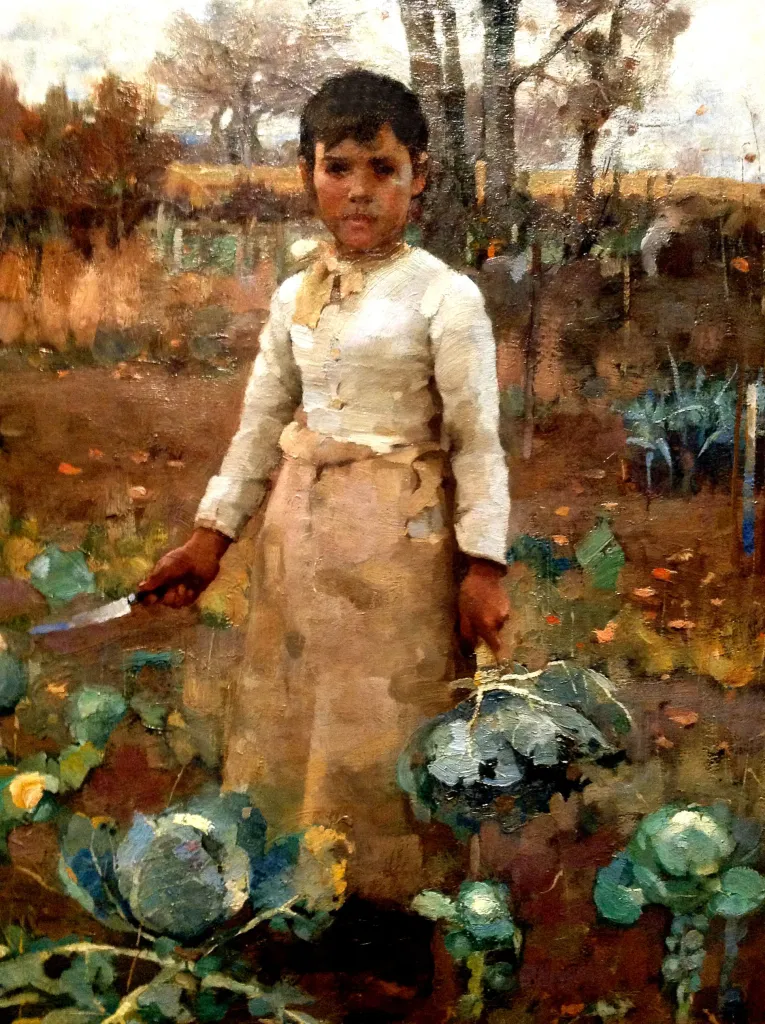Very close to Whistler, whom he admired, Sir James Guthrie (1859-1930) was one of the most gifted landscape painters of the "Glasgow Group". After a brief stay in Paris in 1882, his realistic style quickly evolved towards the brilliance of direct painting and a freedom of tone close to that of the Impressionists. Obviously influenced by Bastien Lepage or Pissarro, he will continue all his life to oscillate between the two currents, almost entirely abandoning landscape after 1890 to devote himself to portraiture.

In the 1880s, James Guthrie worked extensively outdoors, particularly in Berwickshire. After a bout of depression which led him to give up painting (he was unable to reproduce the effect of the rain on the fields) and to destroy a number of canvases, he reconsidered his decision and devoted himself mainly to portraits. He led a brilliant career becoming president of the Glasgow Art Club in 1896, then of the Royal Scottish Academy between 1902 and 1919. Made a Commander of the Order of the Belgian Crown, he died in 1930 in his home in Rhu in Dunbartonshire.

We can not help the proximity of style with Jules Bastien Lepage or Marie Bashkirtseff in the representation of children's scenes.


The powerful composition of this little girl picking cabbage brings James Guthrie closer to Camille Pissarro, in their unadorned description of rural life and its labors.

In his art history lectures, Fabrice Roy combines the past with the present, in a poetic and playful evocation of the French 19th century...


